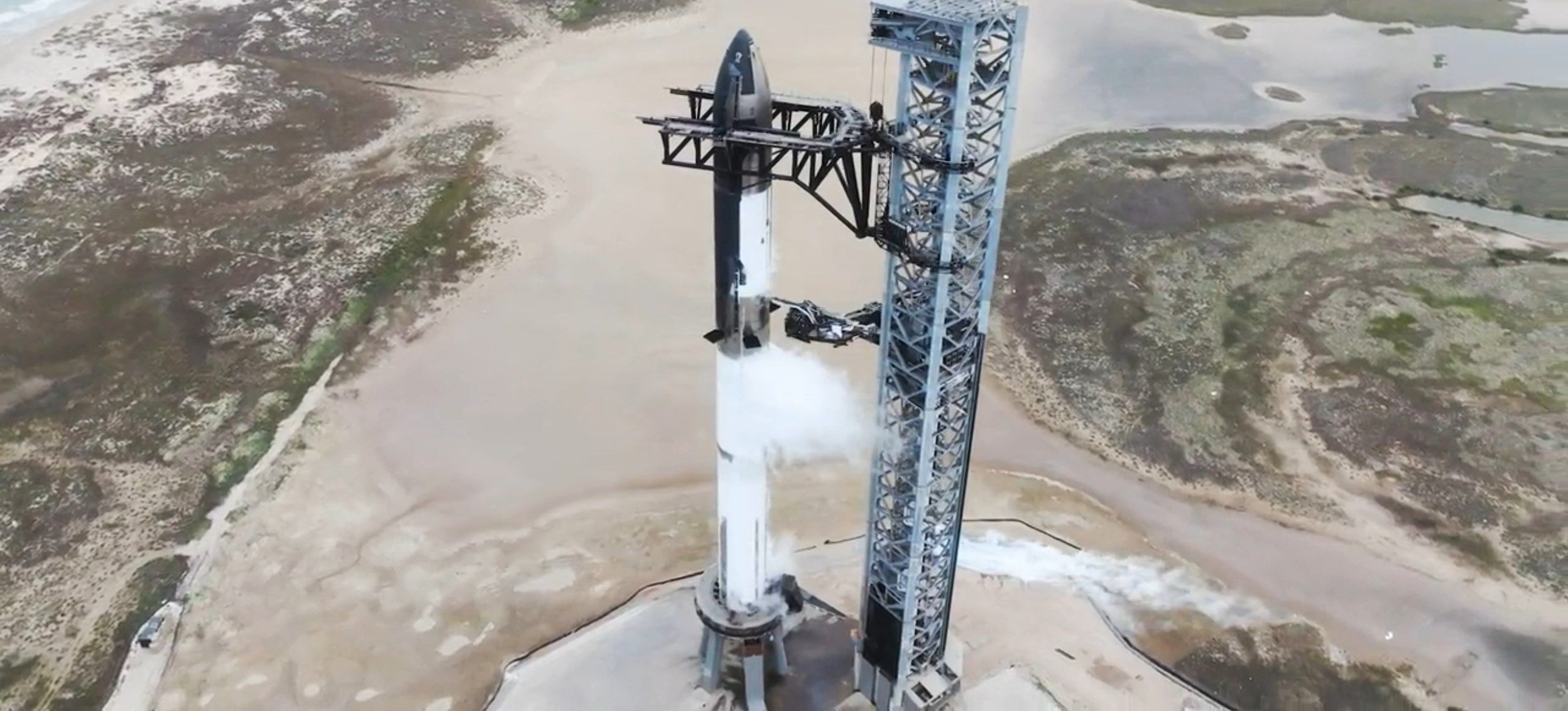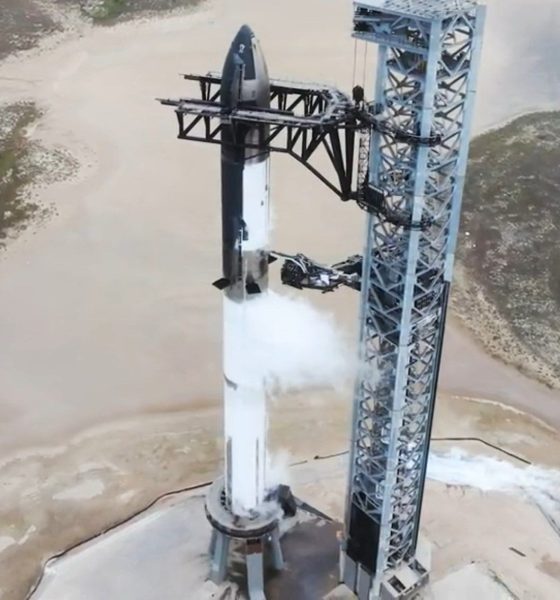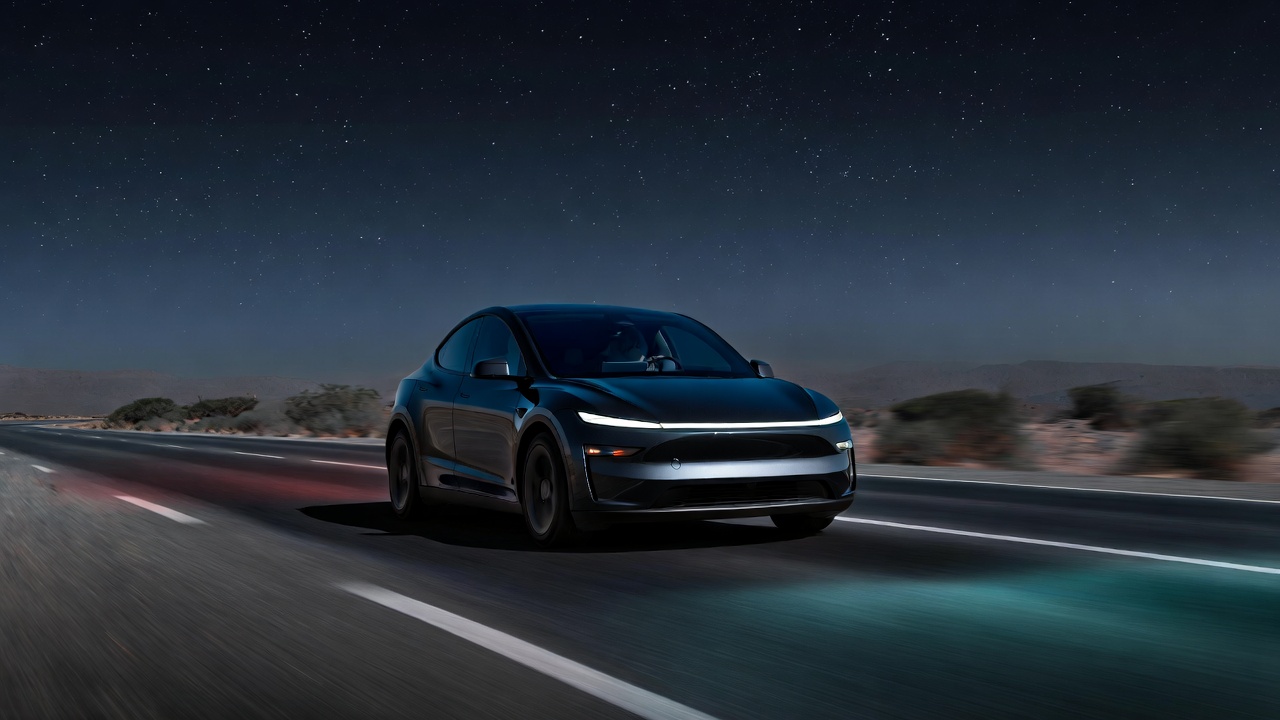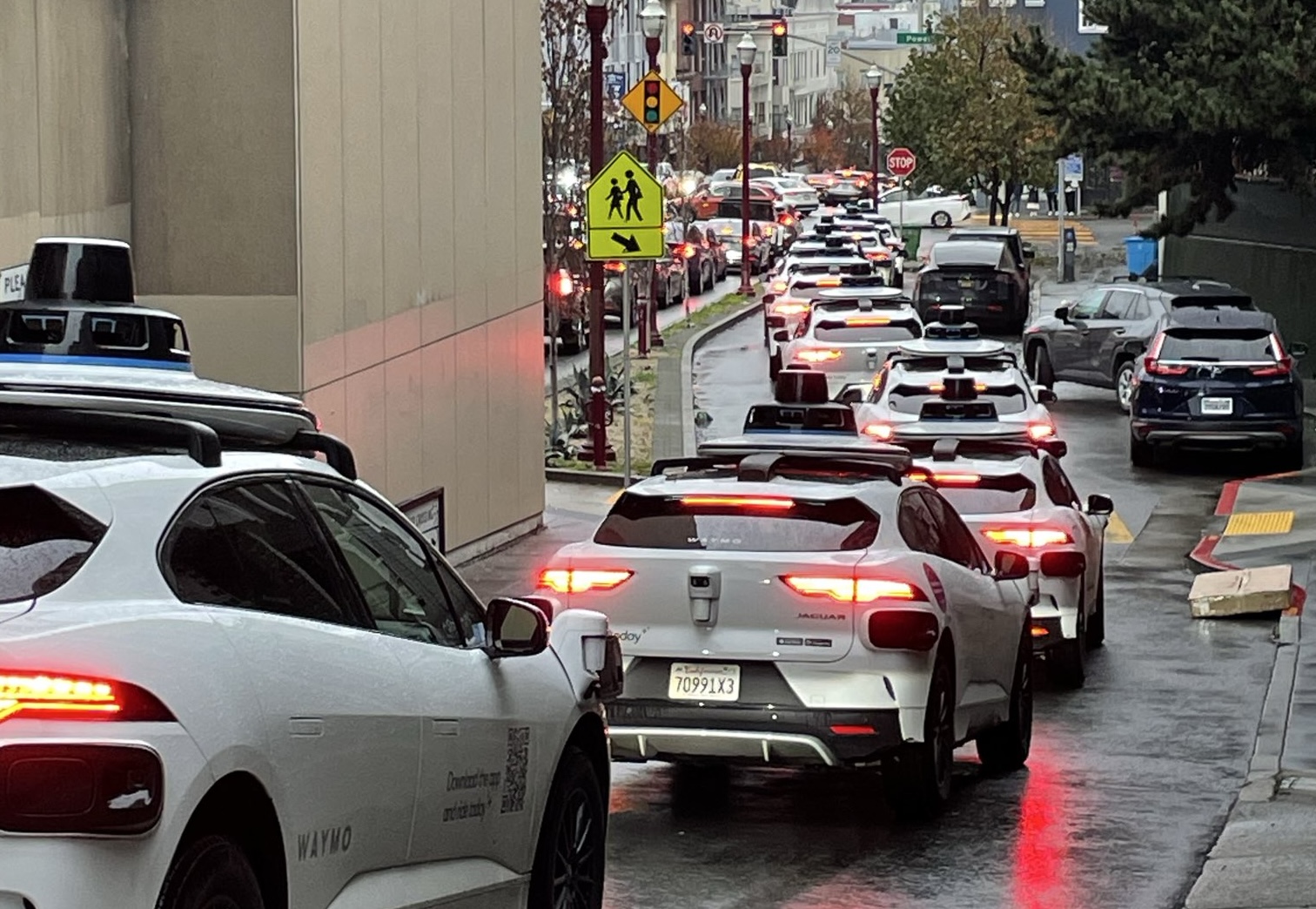

News
SpaceX’s Starship rocket sails through first “flight-like” fueling test
SpaceX’s fully-assembled Starship rocket appears to have sailed through a major wet dress rehearsal test on the first attempt.
With the completion of that test, the next-generation SpaceX rocket has taken a big step toward its first orbital launch attempt. Starship measures around 120 meters (~394 ft) tall and 9 meters (~30 ft) wide, making it the largest rocket ever assembled. It’s designed to launch more than 100 metric tons (~220,000 lb) to low Earth orbit (LEO) in a fully-reusable configuration. At liftoff, Starship’s 33 Raptor engines will produce up to 7590 tons (16.7M lbf) of thrust, making it more powerful than any rocket in history by a large margin.
And on Monday, January 23rd, Starship likely became the heaviest rocket ever after SpaceX fully loaded the vehicle with propellant. Surprising most viewers, SpaceX also appeared to complete the complex test associated with that milestone without running into any major issues.
The update that's rolling out to the fleet makes full use of the front and rear steering travel to minimize turning circle. In this case a reduction of 1.6 feet just over the air— Wes (@wmorrill3) April 16, 2024
The apparent success is surprising because it simply hasn’t been SpaceX’s approach of choice while developing Starship. Since SpaceX began assembling Starhopper in an empty Texas field in 2018, the Starship program has been almost exclusively managed to prioritize speed and expect failures. The company almost always preferred to build, test, and learn from minimum-viable-product prototypes as quickly as possible, even if that meant that failures were guaranteed.
Because SpaceX expected failures, it learned from them and always had another prototype ready to carry the torch forward. Starship prototypes rarely completed ground or flight tests on the first try, as SpaceX was simultaneously learning – often catastrophically – how to test and operate those vehicles. The culmination of that failure-as-an-option strategy was a series of seven suborbital Starship tests – two short hops of identical prototypes and five launch and landing attempts of five more advanced prototypes between August 2020 and May 2021. On the fifth attempt, after four failures, a full-scale Starship successfully launched to 12.5 kilometers (~41,000 ft), shut off its engines, fell back to Earth, reignited its engines, flipped around, and landed in one piece.
By all appearances, the campaign was the ultimate corroboration of SpaceX’s development strategy. In the second half of 2022, however, SpaceX decided to dramatically change the Starship program’s approach to risk management and systems engineering. Starship testing has become exceptionally cautious over the last several months, as a result.
From fail-fast to slow-and-steady
There is a small chance SpaceX simply got lucky, but Starship’s first fully-assembled wet dress rehearsal test appears to indicate that that caution has paid off. Combined, both stages of the rocket – Ship 24 and Booster 7 – collectively completed dozens of separate proof tests and static fires since mid-2022. They also made it through several far more limited tests while stacked.
Having cautiously characterized each prototype about as well as it possibly could, SpaceX finally pulled the trigger on January 23rd. After hours of conditioning the Starbase, Texas orbital launch site’s giant tank farm, SpaceX opened the floodgates and loaded Ship 24 and Booster 7 with up to 4860 tons (~10.7M lbs) of cryogenic liquid oxygen and liquid methane propellant in about 90 minutes. Once fully loaded, the combined weight of the rocket and propellant likely exceeded 5000 tons (~11M lbs), making Starship the heaviest rocket in history. The next heaviest rockets ever built, Saturn V and N-1, weighed around 2800 tons (~6.2M lbs) fully loaded.
SpaceX was also able to drain Starship and return its propellant to the pad’s ground storage tanks about four hours after filling the rocket.
“Flight-like” testing
The company later confirmed that the test was a “full flight-like wet dress rehearsal,” as suspected, and noted that data gathered from it would “help verify a full launch countdown sequence, as well as the performance of Starship and the orbital pad for flight-like operations.” Parts of the test visible from unaffiliated webcasts like NASASpaceflight’s seemed to confirm as much. Shortly after Starship was fully loaded, for example, SpaceX activated the orbital launch mount’s fire extinguisher system, seemingly practicing the moments before the rocket would otherwise ignite its engines and take flight.
At no point during the wet dress rehearsal did SpaceX appear to enter any kind of hold or abort, indicating that the rocket’s systems were all working well enough together to smoothly complete it on the first try. The only mildly concerning behavior visible during the multi-hour test came shortly after Starship was topped off. Booster 7 opened one of its methane tank gas vents to relieve pressure and instead appeared to vent liquid methane, producing a flammable cloud thousands of feet long. More likely than not, the Super Heavy was slightly overfilled, and the liquid vent was an intentional response to that error. The cloud of methane thankfully did not find an ignition source, and Starship went on to finish the test as planned.
SpaceX has a lot of work left to prepare Ship 24 and Booster 7 for Starship’s first orbital launch attempt. Booster 7 must still complete one or several more static fires, during which it could become the most powerful rocket ever tested. To reduce risk, SpaceX will likely remove Ship 24 while testing Super Heavy, and reassemble the rocket only if Booster 7 passes its tests. SpaceX also needs to repair the pad after static fire testing and work with the Federal Aviation Administration (FAA) to finalize Starship’s first orbital launch license.
But after many false positives, Starship’s successful completion of a wet dress rehearsal on the first try has confirmed that the rocket’s orbital launch debut is – for the first time – actually close at hand.

Elon Musk
Tesla’s Elon Musk gives timeframe for FSD’s release in UAE
Provided that Musk’s timeframe proves accurate, FSD would be able to start saturating the Middle East, starting with the UAE, next year.

Tesla CEO Elon Musk stated on Monday that Full Self-Driving (Supervised) could launch in the United Arab Emirates (UAE) as soon as January 2026.
Provided that Musk’s timeframe proves accurate, FSD would be able to start saturating the Middle East, starting with the UAE, next year.
Musk’s estimate
In a post on X, UAE-based political analyst Ahmed Sharif Al Amiri asked Musk when FSD would arrive in the country, quoting an earlier post where the CEO encouraged users to try out FSD for themselves. Musk responded directly to the analyst’s inquiry.
“Hopefully, next month,” Musk wrote. The exchange attracted a lot of attention, with numerous X users sharing their excitement at the idea of FSD being brought to a new country. FSD (Supervised), after all, would likely allow hands-off highway driving, urban navigation, and parking under driver oversight in traffic-heavy cities such as Dubai and Abu Dhabi.
Musk’s comments about FSD’s arrival in the UAE were posted following his visit to the Middle Eastern country. Over the weekend, images were shared online of Musk meeting with UAE Defense Minister, Deputy Prime Minister, and Dubai Crown Prince HH Sheikh Hamdan bin Mohammed. Musk also posted a supportive message about the country, posting “UAE rocks!” on X.
FSD recognition
FSD has been getting quite a lot of support from foreign media outlets. FSD (Supervised) earned high marks from Germany’s largest car magazine, Auto Bild, during a test in Berlin’s challenging urban environment. The demonstration highlighted the system’s ability to handle dense traffic, construction sites, pedestrian crossings, and narrow streets with smooth, confident decision-making.
Journalist Robin Hornig was particularly struck by FSD’s superior perception and tireless attention, stating: “Tesla FSD Supervised sees more than I do. It doesn’t get distracted and never gets tired. I like to think I’m a good driver, but I can’t match this system’s all-around vision. It’s at its best when both work together: my experience and the Tesla’s constant attention.” Only one intervention was needed when the system misread a route, showcasing its maturity while relying on vision-only sensors and over-the-air learning.
News
Tesla quietly flexes FSD’s reliability amid Waymo blackout in San Francisco
“Tesla Robotaxis were unaffected by the SF power outage,” Musk wrote in his post.

Tesla highlighted its Full Self-Driving (Supervised) system’s robustness this week by sharing dashcam footage of a vehicle in FSD navigating pitch-black San Francisco streets during the city’s widespread power outage.
While Waymo’s robotaxis stalled and caused traffic jams, Tesla’s vision-only approach kept operating seamlessly without remote intervention. Elon Musk amplified the clip, highlighting the contrast between the two systems.
Tesla FSD handles total darkness
The @Tesla_AI account posted a video from a Model Y operating on FSD during San Francisco’s blackout. As could be seen in the video, streetlights, traffic signals, and surrounding illumination were completely out, but the vehicle drove confidently and cautiously, just like a proficient human driver.
Musk reposted the clip, adding context to reports of Waymo vehicles struggling in the same conditions. “Tesla Robotaxis were unaffected by the SF power outage,” Musk wrote in his post.
Musk and the Tesla AI team’s posts highlight the idea that FSD operates a lot like any experienced human driver. Since the system does not rely on a variety of sensors and a complicated symphony of factors, vehicles could technically navigate challenging circumstances as they emerge. This definitely seemed to be the case in San Francisco.
Waymo’s blackout struggles
Waymo faced scrutiny after multiple self-driving Jaguar I-PACE taxis stopped functioning during the blackout, blocking lanes, causing traffic jams, and requiring manual retrieval. Videos shared during the power outage showed fleets of Waymo vehicles just stopping in the middle of the road, seemingly confused about what to do when the lights go out.
In a comment, Waymo stated that its vehicles treat nonfunctional signals as four-way stops, but “the sheer scale of the outage led to instances where vehicles remained stationary longer than usual to confirm the state of the affected intersections. This contributed to traffic friction during the height of the congestion.”
A company spokesperson also shared some thoughts about the incidents. “Yesterday’s power outage was a widespread event that caused gridlock across San Francisco, with non-functioning traffic signals and transit disruptions. While the failure of the utility infrastructure was significant, we are committed to ensuring our technology adjusts to traffic flow during such events,” the Waymo spokesperson stated, adding that it is “focused on rapidly integrating the lessons learned from this event, and are committed to earning and maintaining the trust of the communities we serve every day.”
News
Waymo scrutinized after self-driving taxis cause traffic jams during SF blackout
It’s not farfetched to speculate that it would have been a doomsday scenario for Tesla had FSD behaved this way.

A power outage across San Francisco over the weekend forced numerous Waymo self-driving taxis to stop at darkened intersections and cause traffic blockages in multiple locations across the city. The disruption left riders stranded, frustrated drivers blocked, and city officials stepping in as the Alphabet-owned company temporarily suspended service amid the widespread gridlock.
Needless to say, it would likely have been a doomsday scenario for Tesla had FSD behaved in a similar way, especially if fleets of its robotaxis blocked traffic for numerous drivers.
Power outage halts Waymo fleet
The outage knocked out electricity for tens of thousands of customers, leaving traffic signals dark across large parts of the city, as noted in a report from the New York Times. Waymo vehicles began stopping at intersections and remained stationary for extended periods, seemingly unable to operate. Tow truck operators worked through the night removing immobilized vehicles, while videos circulated online showing Waymos with hazard lights flashing as traffic backed up around them.
Waymo later confirmed that it had paused its Bay Area ride-hailing service after the San Francisco mayor’s office contacted the company about the congestion its vehicles were contributing to. Service began coming back online shortly after 3:30 p.m. local time, though some users still reported being unable to request rides. Waymo maintained that no injuries or accidents were reported during the outage.
Autonomous cars during emergencies
The incident surprised industry observers since autonomous vehicles are designed to function during signal outages and temporary connectivity losses. Waymo stated that its vehicles treat nonfunctional signals as four-way stops, but “the sheer scale of the outage led to instances where vehicles remained stationary longer than usual to confirm the state of the affected intersections. This contributed to traffic friction during the height of the congestion.” Experts suggested the problem may have been linked to the vehicles’ reliance on remote assistance teams, which help resolve complex situations the cars cannot handle independently.
“Yesterday’s power outage was a widespread event that caused gridlock across San Francisco, with non-functioning traffic signals and transit disruptions. While the failure of the utility infrastructure was significant, we are committed to ensuring our technology adjusts to traffic flow during such events,” the Waymo spokesperson stated, adding that it is “focused on rapidly integrating the lessons learned from this event, and are committed to earning and maintaining the trust of the communities we serve every day.”








